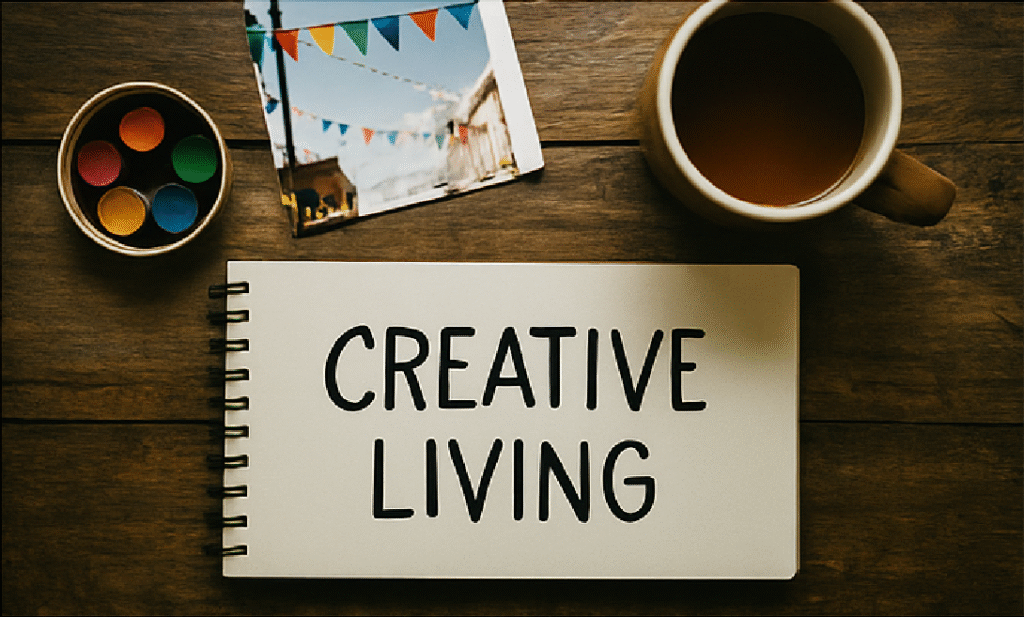Creativity isn’t something reserved for artists, designers, or musicians. It’s not confined to studios or stages. Creativity lives and breathes in everyday life—in small decisions, spontaneous moments, and quiet reflections. Whether you’re writing a poem in your journal, rearranging your room, capturing a sunset on your phone, or solving a tricky problem at work, you’re being creative.
In fact, the most powerful form of creativity isn’t always loud or grand. Often, it’s subtle. It’s in how we combine ideas, how we tell stories, how we see the world

The Misconception About Creativity
Many people grow up believing that being creative means being naturally gifted at painting, writing, or music. That if you’re not “artistic,” you’re not creative.
But that’s a myth.
Creativity is less about talent and more about perspective. It’s about seeing things differently. It’s about asking “What if?” and exploring beyond what’s expected. Everyone has the potential to be creative. The question is whether we allow ourselves the space and freedom to express it.
Where Creativity Hides in Your Daily Routine
Let’s break down what “everyday creativity” looks like:
- In the kitchen: Trying a new recipe, swapping ingredients, or plating your dish like a chef.
- During your commute: Creating a playlist that tells a story or mentally drafting a blog post while observing people around you.
- At work: Finding a smoother way to organize tasks, writing clever email subject lines, or leading a meeting with more energy and empathy.
- In conversation: Using humor, analogies, or metaphors to explain an idea.
Everyday creativity is about noticing. It’s about combining practicality with imagination—turning the ordinary into something memorable.
Simple Practices to Spark Daily Creativity
You don’t need fancy tools or hours of free time. Here are simple ways to invite more creativity into your life:
1. Start a “10-Minute Create” Ritual
Pick any time of day—morning, lunch, before bed. Use 10 minutes to doodle, write, take photos, brainstorm, or record a voice memo. The key is not the outcome, but the habit of creating freely.
2. Keep a “Noticing Journal”
Every day, write down one thing you noticed that you might’ve otherwise missed. A shadow on the wall. A funny word. A stranger’s outfit. Over time, your awareness will expand—and your ideas with it.
3. Consume Creatively, Not Passively
When you scroll Instagram, watch a film, or read an article, ask yourself:
- What do I like about this?
- What would I do differently?
- How could I remix this into my own style?
This transforms consumption into creative research.
4. Use Constraints to Your Advantage
Some of the best ideas come from limits. Try:
- Writing a story in only six words
- Taking a photo without lifting your feet
- Cooking with only five ingredients
Limitations force your creativity to stretch.
Creativity Across Cultures: Global Inspiration
Creativity looks different around the world. In Japan, wabi-sabi celebrates imperfection. In Ghana, kente patterns tell ancestral stories. In Mexico, Día de los Muertos altars blend art, memory, and spirituality.
By exploring global creative traditions, we expand our own possibilities. We begin to see that creativity is universal—but its expression is beautifully diverse


